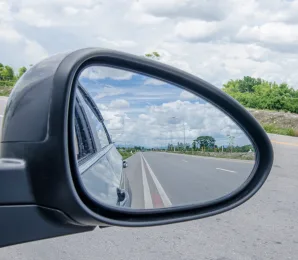Attention: Your Service Department Is Leaking!


Service revenue should be a major profit center for dealerships. Yet many dealerships unknowingly miss these opportunities due to outdated inspection processes, poor customer communication and a lack of follow-up on declined services.
Service Revenue Is Going Down the Drain
Imagine your service department as a leaky faucet. At first, it’s just a few drops, barely noticeable. But over time, those drops add up to gallons of wasted water or, in this case, thousands of dollars in lost revenue.
Inspection Process
Many dealerships still rely on manual, paper-based inspections that slow technician workflows, create bottlenecks and result in missed opportunities. Some of the reasons paper inspections are holding you back include illegible handwriting, misplaced forms and slow transfer to the advisors, leading to incomplete service recommendations for your customers. Industry data shows that 70% of customers are not presented with inspection-based recommendations, but when offered, 50% of customers approve the work to be performed.
Customer Education
Customers who don’t understand why a service is necessary will likely decline the recommendation. Too often, service advisors fail to clearly explain the value of recommended maintenance. Many vehicle owners believe that maintenance is optional and “If it ain’t broke, don’t fix it.” They don’t realize that skipping maintenance today leads to costly repairs later.
Advisor Communication — If customers hear “You need a transmission service” but aren’t told why or how it improves vehicle reliability and longevity, they won’t buy in. Descriptive language on the inspection form (e.g., fluid is dark, burnt and needs to be replaced) is more effective than “flush recommended.” Avoid technical jargon, and use analogies that help customers understand (e.g., an engine with carbon buildup is like a dirty barbecue grill and needs annual cleaning).
Visual Proof — Imagine a doctor recommending surgery without showing an X-ray. Would you approve it? Probably not. Customers need to see proof of worn brakes, dirty fluids or carbon buildup before agreeing to the repair. Many digital inspection tools can capture images and video to help explain why a repair is needed. Use such vehicle data and countertop visuals as before-and-after service images, fluid samples and parts displays to convey the need to proceed with service recommendations. Studies show that when customers are informed of the benefits of preventive maintenance, service approval rates increase by 50%.
Declined Services
One of the biggest lost revenue opportunities is failing to follow up on declined services. Many customers approve these services if reminded later via email, text or phone call. Too many dealerships wait for customers to return with major issues instead of actively reaching out to reschedule declined maintenance services.
Dealerships that implement a structured follow-up process recover up to 30% of lost revenue. If a customer declines a brake fluid exchange today but months later has brake failure, will they come back to your dealership or go somewhere else?
Stopping the Leaks
If your service department struggles with selling preventive maintenance, inefficient inspections or missed opportunities, here’s how to diagnose and fix the problem:
Step 1: Audit Your Inspection Process
- Start using a digital multi-point inspection tool.
- Track how long it takes for advisors to receive inspection recommendations.
- Track the percentage of approved service recommendations.
Step 2: Evaluate Your Service Advisor Training
- Focus on building trust, educating customers, and overcoming common objections.
- Provide before-and-after visuals to help customers understand service needs.
- Avoid industry jargon and provide word tracks with simple analogies to convey service benefits.
Step 3: Implement a Declined Services Follow-Up Plan
- Track all recommended services that weren’t approved and follow up.
- Use automated reminders (text, email, phone calls) to re-engage customers.
- Offer service promotions or discounts to encourage return visits.
Step 4: Measure, Adjust and Optimize
- Review weekly and monthly reports to identify revenue trends.
- Implement team performance metrics to hold advisors accountable.
- Provide ongoing training to ensure consistency and execution.
Don’t Let Revenue Slip Away
Service departments that follow these steps can increase customer-pay revenue by 20% or more within six months. Your service department isn’t just about fixing cars; it’s about building trust, preventing major repairs and maximizing revenue. Customers want their vehicles to last longer, perform better and avoid expensive breakdowns. They just need the right information to make confident service decisions. The question is: Will your dealership take action or will the leaks continue? Take a deep dive into your service department’s numbers today. Identify how many recommended services go unapproved and how many customers never return. Once you see the data, you’ll know exactly where to focus your improvement efforts.









